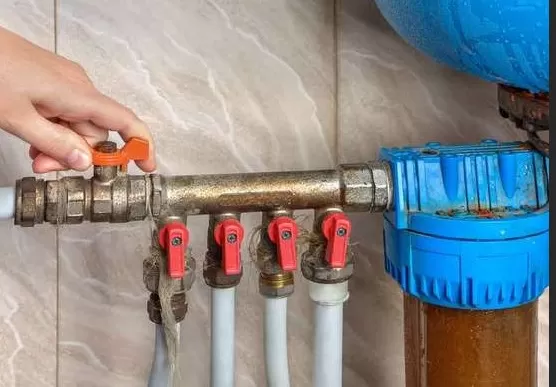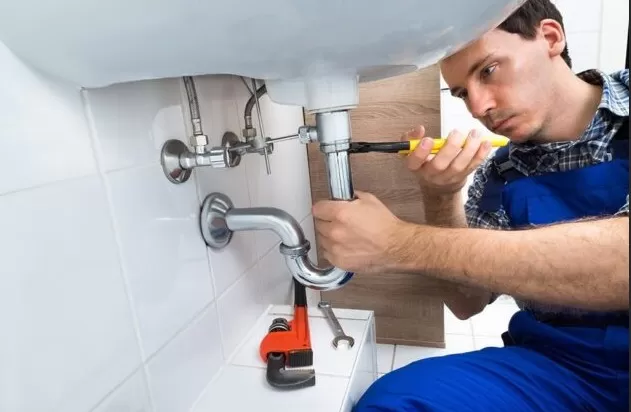Essential Plumbing Tips for Everyone to Know. When faced with common plumbing issues like a dripping faucet, low water pressure, or a clogged pipe, homeowners often feel inclined to reach out to a professional plumber—and rightfully so.
However, before picking up the phone, it’s worth knowing that there are several basic plumbing secrets that can empower you to handle certain situations on your own. By familiarizing yourself with these tips, you might just be able to save yourself from incurring costly visits from plumbing experts. While these tips can help you tackle common plumbing problems, it’s important to recognize your limits and know when to call a professional plumber. For complex issues or situations beyond your expertise, seeking professional assistance is always the best course of action. However, armed with these plumbing secrets, you can handle many minor plumbing concerns with confidence and potentially save yourself from unnecessary expenses.
Understanding the Position of Shut-Off Valves: Essential Information for Your New Home

When preparing to settle into a new residence, it is crucial to familiarize yourself with the whereabouts of the primary shut-off valve and drain.
It is worth noting that, in certain instances, the shut-off valve may be situated outside the confines of the house. Additionally, it is advisable to acquaint yourself with the access points of the sewer line, as periodic clean outs might be necessary.
However, it is important to keep in mind that apartments and condominiums may not possess dedicated shut-off valves of their own. Hence, being aware of these vital details will enable you to efficiently manage the utilities in your new home and ensure the smooth operation of your plumbing system.
Avoid Damaging Pipes: Precautions When Drilling or Nailing
Before embarking on any drilling or nailing tasks that involve your walls, floors, or ceiling, it is crucial to take precautionary measures to prevent inadvertent damage to supply or drainage pipes.
Ensuring the integrity of these pipes is essential to maintain the proper functioning of your plumbing system. .
To begin, it is advisable to determine whether there are any pipes situated behind the area where you plan to work.
An effective and affordable method is to utilize a stud finder, which can often detect the presence of pipes as well. This simple device will assist you in identifying potential obstacles and guide you in choosing safe drilling or nailing spots.
Alternatively, if you are willing to invest in a more advanced tool, an endoscopic camera can be a valuable asset.
This camera can be carefully maneuvered into the walls, providing a visual inspection of the interior and allowing you to locate any concealed pipes. While this option may require a financial investment, it offers a more comprehensive and accurate assessment of potential pipe locations, minimizing the risk of accidental punctures.
By taking these precautions and employing the appropriate tools, you can confidently proceed with your renovation or maintenance tasks, knowing that you have significantly reduced the likelihood of damaging any underlying pipes.
Determine What Can Safely Be Flushed

It is crucial for homeowners to understand that their toilet should not be treated as a disposal unit, as flushing anything other than toilet paper can result in troublesome clogs.
Even products labeled as “flushable,” such as baby wipes, can cause backups in the plumbing system. Therefore, it is essential to be aware of what items can be safely flushed and which should be disposed of through alternative means.
To ensure a properly functioning plumbing system and prevent clogs, it is recommended to limit flushing to toilet paper only.
Toilet paper is specifically designed to break down and dissolve in water, making it easier for the plumbing system to handle. However, other items, even if they may seem flushable, can pose a significant risk.
Items such as paper towels, facial tissues, sanitary pads, tampons, cotton swabs, dental floss, diapers, and any type of wipes (including those marketed as “flushable”) should never be flushed down the toilet.
These items are not designed to disintegrate quickly and can cause blockages in the pipes, leading to plumbing issues and potential damage.
To dispose of non-flushable items, it is best to use designated waste bins or trash receptacles.
Properly disposing of these items will help maintain the integrity of your plumbing system, prevent clogs, and avoid costly repairs in the future.
By being aware of what can be safely flushed and making responsible choices, homeowners can ensure the smooth operation of their plumbing system and avoid unnecessary plumbing emergencies caused by clogs.
Avoid Disposing of Garbage Down the Drain
It is essential to remember that the Kitchen Drain is not meant to be a receptacle for garbage.
Dumping certain substances down the drain, such as coffee grounds, food debris, bacon grease, vegetable peelings, and starchy foods like rice or potatoes, can lead to severe pipe clogs. To maintain the proper functioning of your plumbing system and prevent unnecessary plumbing issues, it is crucial to adopt responsible disposal practices.
Coffee grounds, when washed down the drain, can accumulate and create blockages over time.
Food debris, such as leftover scraps or excessive grease, can solidify within the pipes, causing stubborn clogs that may require professional assistance to clear. Similarly, disposing of vegetable peelings or starchy foods down the drain can lead to pipe blockages as they tend to swell when exposed to water.
To mitigate these risks, it is advisable to dispose of such waste in a proper manner.
Coffee grounds can be added to compost bins or used as a garden fertilizer. Food debris should be discarded in the trash or composted if suitable.
Grease should be allowed to cool and solidify before being disposed of in a sealed container and thrown in the garbage.
Additionally, it is wise to consult the manufacturer’s manual for your garbage disposal unit.
Familiarize yourself with the specific guidelines provided by the manufacturer to understand what types of materials can be safely processed by the unit. Different models may have varying capabilities, so it is important to follow the recommended usage instructions to avoid damaging the disposal or causing clogs in the plumbing system.
By adopting responsible practices and ensuring that only appropriate substances are disposed of in the kitchen drain, homeowners can effectively maintain the integrity of their pipes, prevent clogs, and avoid unnecessary plumbing complications in the future.
Embrace the Power of a Plunger

One valuable tool that every homeowner should have in their arsenal is a high-quality plunger.
With its versatile design, a plunger can effectively tackle clogs in toilets, sinks, and drains, making it an essential item for any household. Here are a few ways you can make the most of this handy tool:.
Clearing Toilet Clogs: When faced with a stubborn toilet clog, a plunger can come to the rescue.
Ensure you have a plunger specifically designed for toilets, featuring a flange or an extended rubber section at the bottom. By creating a seal around the drain opening and applying firm, rhythmic plunging motions, you can generate enough suction and pressure to dislodge the clog.
Unclogging Sinks and Drains: For sink and drain clogs, a standard cup plunger will suffice.
Place the plunger over the drain opening and push down firmly to create a tight seal. Then, vigorously plunge up and down to create a suction effect, which can help dislodge the clog and restore proper drainage.
Remember to cover any additional openings, such as overflow vents, with a wet cloth or tape to ensure efficient plunging.
Cleaning Sink Traps: If you need to clean the trap underneath a sink, a plunger can be a helpful tool to minimize mess and water spillage.
Before removing the trap, use the plunger to push most of the water out of the sink. By creating pressure with the plunger, you can force water through the pipes and reduce the amount of water remaining in the trap.
This approach can make the task of removing the trap significantly less wet and messy.
Investing in a high-quality plunger is a worthwhile decision, as it can save you time, money, and the hassle of calling a plumber for common clogs.
Remember to choose a plunger that suits the specific needs of your toilets, sinks, and drains, and keep it readily accessible in case of emergencies. With the power of a plunger on hand, you can confidently address clogs and maintain the smooth operation of your plumbing system.
*The information is for reference only.